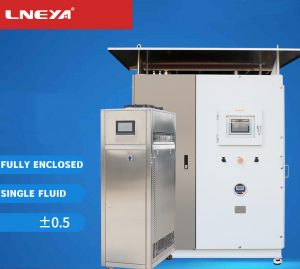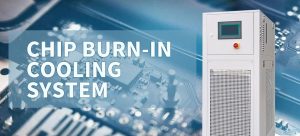Relationship Between Condensation Temperature And Condensation Temperature In Ultra Low Temperature
The chilling temperature of the ultra low temperature recirculating chillers refers to the temperature at which the state of the substance changes from a gaseous state to a liquid state under a certain pressure. Different substances have different condensation temperatures. For the same substance, changes in external pressure can also cause changes in the condensing temperature. The condensation temperature of the pure substance is a temperature point, and for the mixture, the boiling range elongation condensation is a temperature range. In general, as the outside air pressure increases, the condensing temperature also rises, and vice versa. In short, it is a function of matter, composition and pressure.
The level of condensation temperature depends mainly on the temperature and flow rate of the cooling medium, the condensation area and the form of the condenser. Reducing the condensing temperature can increase the refrigeration capacity of the compressor and reduce the power consumption, thereby increasing the refrigeration coefficient and improving the economics of operation. However, the condensing temperature should not be too low, otherwise it will affect the circulation of the refrigerant, and the cooling capacity will decrease. If the condensing temperature is too high, not only the cooling capacity will decrease, but also the power consumption will increase, and the exhaust temperature of the compressor will increase, the temperature of the lubricating oil will increase, and the viscosity will decrease.
There is also a certain correspondence between the condensation temperature of the ultra low temperature recirculating chiller and the condensing pressure. Therefore, the adjustment of the condensing temperature can also be achieved by adjusting the condensing pressure. When the temperature of the cooling medium (water or air) is constant, the adjustment of the condensing pressure can be achieved by changing the flow rate and the condensation area of the cooling medium. The flow rate of the cooling medium is increased, and the flow rate is correspondingly increased, the heat transfer temperature difference can be reduced, thereby reducing the condensation temperature; and increasing the heat transfer area can also achieve the purpose of reducing the condensation pressure.
관련 권장 사항
-
상위 10대 산업용 냉동고 유지보수
1232When we choose and buy industrial freezers of top 10 brands, in addition to some necessary needs, we should also pay attention to the use and maintenance of the industrial freezer, we should select industrial freezers with long service life, high ...
세부 정보 보기 -
What if the cooling rate of the cooling and heating temperature control system of the reactor slows
1105LNEYA cooling and heating temperature control system is a laboratory instrument and equipment for temperature control of supporting reactors in pharmaceutical and chemical laboratories and other industries. It adopts a fully closed circulation pip...
세부 정보 보기 -
What is the refrigeration principle of the glycol chiller system
1299Glycol Chiller System , as we can tell fromits name, it is to use Glycol as the refrigeration agent for the chiller. In the all air environment, because of thelow temperature in the outdoors, it is impossible to use a cooling tower tosupply t...
세부 정보 보기 -
How to solve the lack of cooling capacity of the semiconductor cooling cycle system?
1126The semiconductor cooling cycle system is a device for cooling the heating part of the semiconductor in the refrigeration equipment. It is commonly used to test semiconductor IC parts, automotive electronic parts, optical fiber components, telecom...
세부 정보 보기
 LNEYA 산업용 냉각기 제조업체 공급 업체
LNEYA 산업용 냉각기 제조업체 공급 업체













